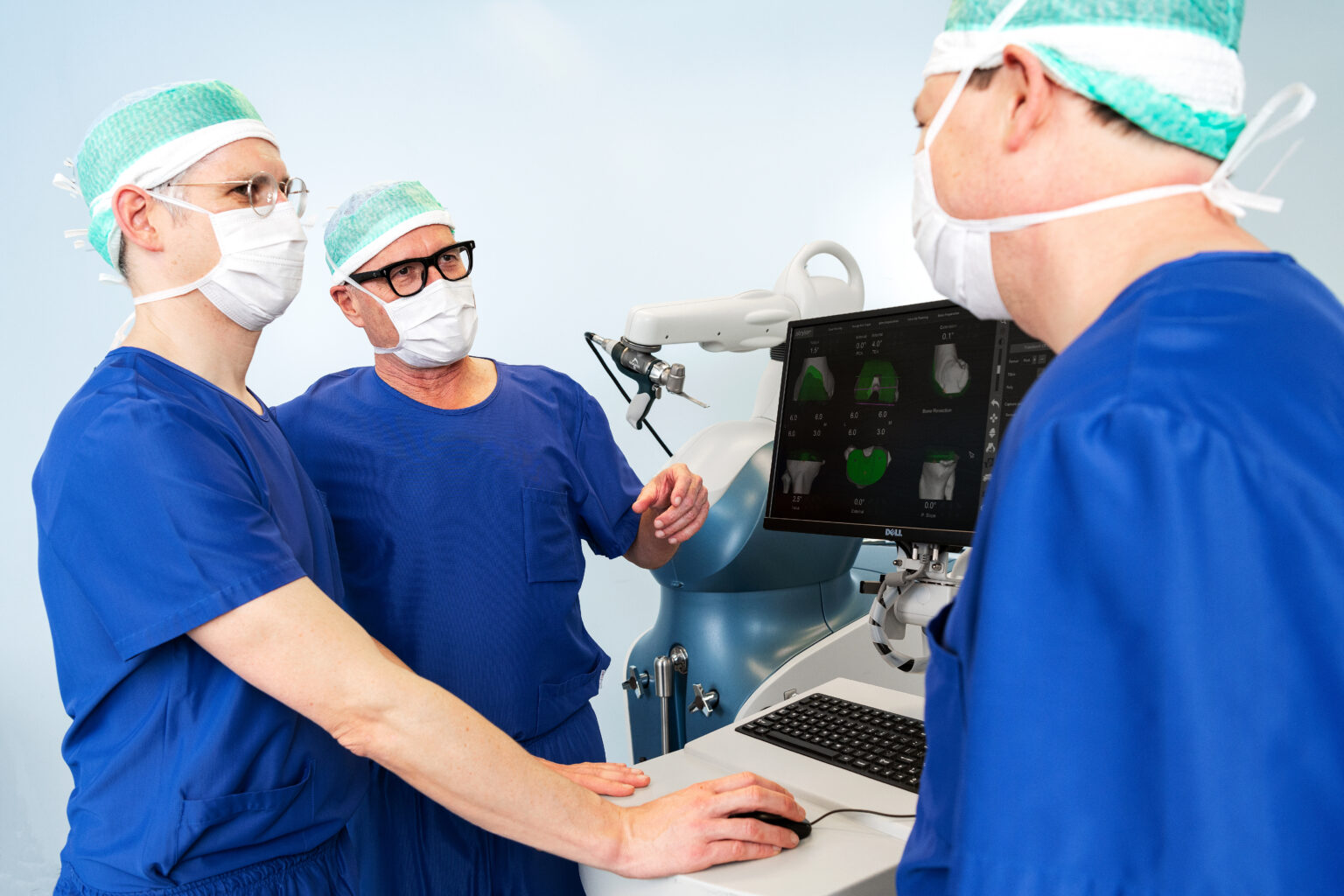
With MAKO robotic assistance, we can make a targeted contribution to further reducing potential risks during the implantation of knee and hip prostheses. Even if 100% patient satisfaction cannot be guaranteed, robot-assisted technology helps us to minimize surgical errors.
Unfortunately, there will be no “no risks” with MAKO robot assistance.
According to studies, we are currently faced with around 10% dissatisfied patients after a knee prosthesis has been implanted and around 5% after a hip prosthesis. This includes a proportion of patients in whom the prosthesis has been implanted perfectly and precisely according to our current knowledge and who nevertheless continue to experience pain and are dissatisfied with the result. The reasons for this may ultimately be due to circumstances far removed from the prosthesis itself. The surgeon is also still responsible for all decisions made during the operation and is not completely immune to errors of judgment despite the most objective data possible. So even with new technologies, we will not be able to achieve 100% patient satisfaction.
The primary aim of robotic assistance is to avoid surgical errors – even the small, possibly less relevant ones – and thus minimize the proportion of dissatisfied patients due to less than ideal prosthesis implantation. A clear improvement is achieved simply by the fact that – as has already been proven with partial prostheses – the risk of re-operation is reduced thanks to the technology. We also have the opportunity to consider new concepts, particularly for the knee joint, such as the combination of partial prostheses and thus the preservation of the anterior cruciate ligament. This new form of therapy has the potential to increase satisfaction with prostheses and is increasingly being used by us thanks to MAKO technology. In comparison, this is extremely difficult to do manually.
By constantly learning about the numerous parameters that the MAKO system offers us, we assume that we will be able to further improve general patient satisfaction and knee function after partial and total knee replacements for satisfied patients. In the near future, we will have a much better understanding of exactly which parameters have which effect, because everything will now be more comprehensible and easier to visualize. The results of operations can already be predicted much more accurately today.